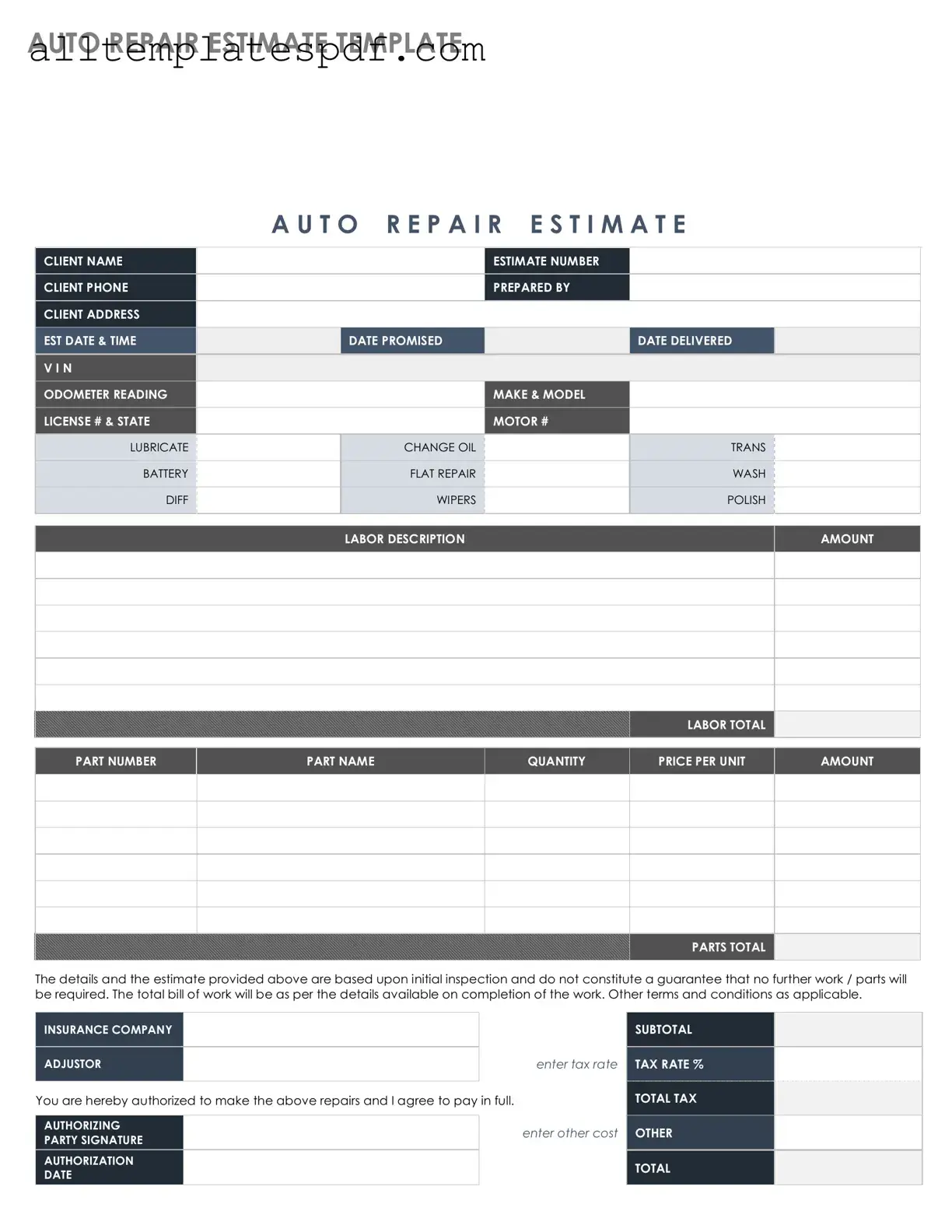Fill Out a Valid Auto Repair Estimate Form
An Auto Repair Estimate form is a document used by mechanics and auto repair shops to provide customers with a detailed breakdown of repair costs before any work begins. This form helps ensure transparency and allows vehicle owners to understand the expenses involved in their vehicle's maintenance. Ready to get started? Fill out the form by clicking the button below.
Open Editor
